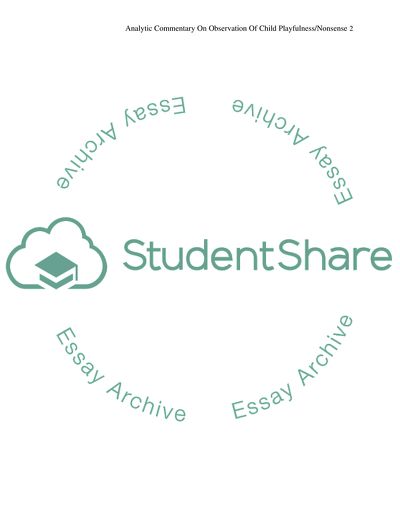Analytic Commentary on Observation of Child Playfulness Coursework Example | Topics and Well Written Essays - 1500 words. https://studentshare.org/psychology/1745291-analytic-commentary-on-observation-of-child-playfulnessnonsense-find-guidance-attached
Analytic Commentary on Observation of Child Playfulness Coursework Example | Topics and Well Written Essays - 1500 Words. https://studentshare.org/psychology/1745291-analytic-commentary-on-observation-of-child-playfulnessnonsense-find-guidance-attached.


